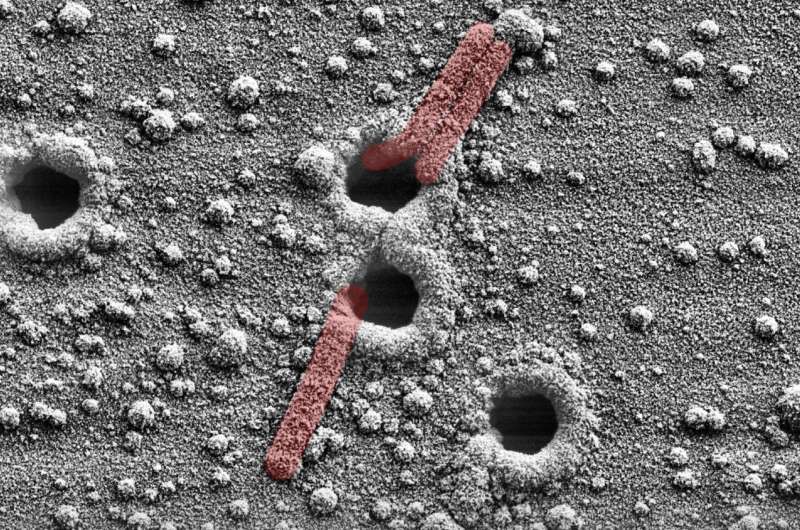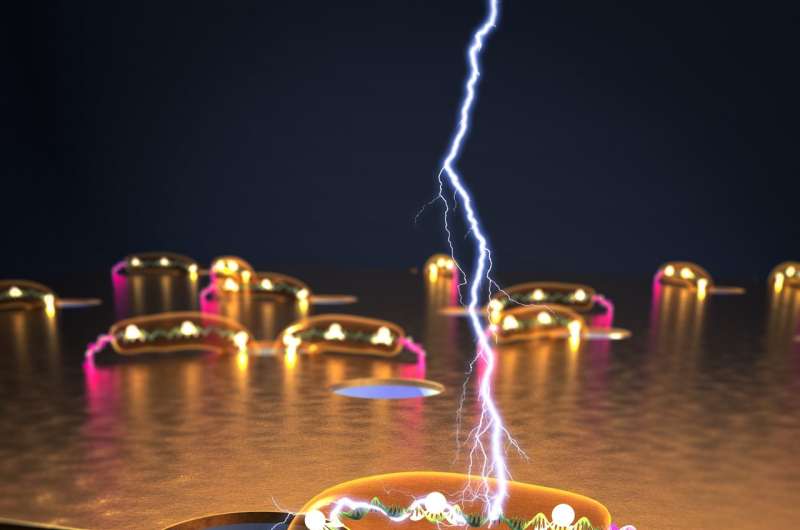Researchers create DNA wires 100 times more sensitive than other biosensors

Scientists in Sweden today reported a nanoengineering innovation that offers hope for treatment of cancer, infections and other health problems – conductive wires of DNA enhanced with gold which could be used to electrically measure hundreds of biological processes simultaneously.
While DNA nanowires have been in development for some time, the method developed at KTH Royal Institute of Technology and Stockholm University produces a unique three-dimensional biosensor for better effectiveness than flat, two-dimensional sensors. "Our geometry makes it much easier to measure several biomolecules simultaneously, and is also 100 times more sensitive," says KTH Professor Wouter van der Wijngaart.
"This is the first out-of-plane metallic nanowire formation based on stretching of DNA through a porous membrane," van der Wijngaart says.
The DNA nanowires, treated with gold to make them conductive, are created only in the presence of specific biomarker molecules in the patient sample and transmit evidence of their presence, even when such molecules are low in concentration. The conductive wires short-circuit both sides of the membrane, which makes them easy to detect.
To make the wires, the team first captured molecules on the surface of a porous membrane, which were designed to only bind with specific biomarker molecules in the sample. Such molecular binding events then trigger the formation of long DNA wires that were drawn through the pores by vacuum drying. Then the membrane is treated with a solution of nanometer sized gold particles, which can only bind to DNA molecules in a certain sequence, van der Wijngaart says.
The researchers published their results today in Microsystems and Nanoengineering.

More information: Maoxiang Guo et al. Efficient DNA-assisted synthesis of trans-membrane gold nanowires, Microsystems & Nanoengineering (2018). DOI: 10.1038/micronano.2017.84
Provided by KTH Royal Institute of Technology




















